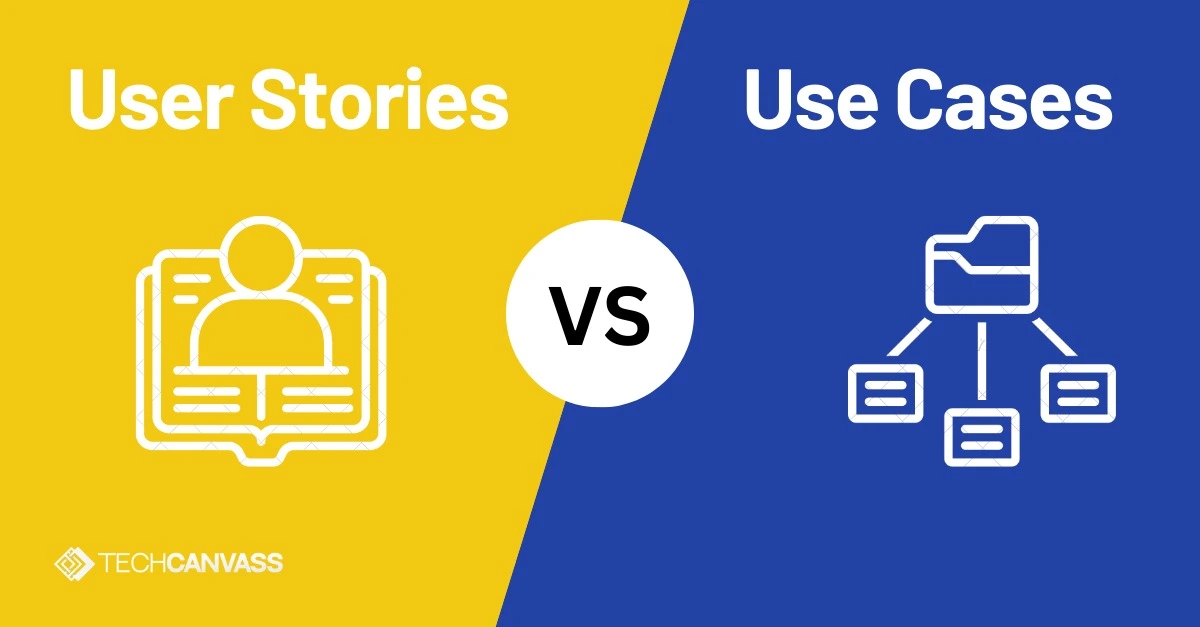Overview of User Stories vs Use Cases
In the world of business analysis and software development, elicitation is an important activity wherein the requirements are gathered. Among all the techniques for requirements gathering, the two most common practices are best described by the user stories vs use cases. Both methods serve the same fundamental purpose: they help the project team identify what the user requires and the expected behavior of the system. However, they engage in this process in their unique styles, and this will be discussed with the strengths as well as the weaknesses of each
User Stories
In business analysis and software development processes, elicitation is a crucial activity, which aims at gathering the requirements. According to all the techniques of requirements gathering, the two most popular practices can be described as user stories vs use cases. Both methods serve the same fundamental purpose: they assist the project team in defining what the user needs and how the system should behave. Nonetheless, both of them participate in this process in their peculiar manner, and this will be debated here with the advantages of each, though with an emphasis on the shortcomings. For example, when discussing user stories vs use cases, one might consider how each method impacts the project’s clarity, communication, and implementation.
“As a customer, I want to be able to reset my password so that I can regain access to my account if I forget my login details.”
User stories vs use cases each bring distinct benefits to the table. User Stories, when used in Agile methodologies, have one of the biggest advantages of their simple structure and focus on a user’s requirement. They are uncomplex and assist with keeping developers oriented on the intent of the user. As observed, User Stories are brief statements that help avoid elaborate discussion on the requirements that the team is developing. This makes them ideal for projects characterized by constantly shifting specifications. In contrast, user stories vs use cases highlights how Use Cases can be more detailed and structured, offering greater clarity in complex systems with less fluid specifications.
Useful Link – Techcanvass User Stories Course
Advantages of User Stories:
- Simplicity: Emerging from the analysis, some remarks can be made as follows: The notation is easy to write and read, even for the non-technical stakeholders of the project.
- Flexibility: They can be easily changed, added, or extended throughout the project as the need arises.
- Focus on User Needs: Maintains the developers on the side of the user.
Disadvantages of User Stories:
- Lack of Detail: May not provide enough information for complex systems.
- Ambiguity: This can lead to different interpretations among team members.
Use Cases
User stories vs use cases reveals key differences in how requirements are captured and communicated. Use cases provide more specificity than user stories and outline how an actor (or another system) will interact with the to-be-built system to accomplish an objective. Similar to a script, a use case outlines the manner in which a user will use the system to complete a specific activity and also captures the action of the system when the user performs a certain act. In contrast, user stories vs use cases emphasizes that user stories are typically more concise and high-level, focusing on the user’s needs rather than the specific interactions between the user and the system.
For example, a Use Case for the same password reset feature might include:
- Main Scenario: User requests a password reset.
- Steps:
- The user navigates to the “Forgot Password” page.
- The user enters their email address.
- The system verifies the e-mail and sends the password reset link.
- The user clicks on the link and then gets a new password and the user is led to a page where he/she can enter the new password.
- The user enters the new password and the system checks for the new password input to be saved.
- Alternative Scenarios: What happens if the user enters an invalid email? What if the password reset link expires?
User stories vs use cases highlights how each approach serves different project needs. Use cases are mostly applied in projects that require additional description or when communication between the user and the system is complex. They provide detailed coverage of the system, outlining the successful scenario, also known as the “happy path,” as well as any other possible variations. In comparison, user stories vs use cases emphasizes that user stories are often more concise and adaptable, focusing on high-level user needs without diving deeply into system interactions.
Useful Link – Techcanvass Use Cases Course
Advantages of Use Cases:
- Detailed Documentation: Provides a thorough understanding of how the system should behave.
- Clarity in Complex Scenarios: Helps in capturing all possible interactions, including exceptions.
- Useful for Testing: Can serve as a basis for creating test cases.
Disadvantages of Use Cases:
- Complexity: This may be tedious to develop and can be complex to manage non-technical audiences.
- Rigid Structure: This may not be as flexible as User Stories where there are changes in requirements.
Therefore, the decision as to whether to use User Stories or Use Cases more or less depends on the project and its stakeholders. User Stories can be used for any project that must be flexible, requires decisions immediately, and emphasizes user’s requirements. They are especially useful for relatively small projects or projects with no high level of complexity. On the other hand, Use Cases are more suitable in projects where detailed documentation is required, more so where several possible interactions with the system may exist, or where compliance is essential as it records multiple interactions with the system. However, each of these cases could be more effectively handled by a combination of the two techniques. For instance, a team may implement the User Stories approach to identify the overall scope of requirements and then consider certain stories as elaborated Use Cases if needed.
Conclusion
Therefore, it could simply be summed up that both user stories vs use cases are valuable tools in the business analyst’s toolkit. The key is understanding the strengths and limitations of each approach and applying them appropriately to the project at hand. In cases where agile development is prioritized and the focus is on user needs, user stories vs use cases suggests that User Stories may be the preferable choice. However, for projects requiring detailed documentation and clarity, especially in complex scenarios, Use Cases may prove to be more suitable.
To further hone your skills in these areas, consider enrolling in specialized courses:
- Case Study Course on User Stories: Techcanvass User Stories Course
- Case Study Course on Use Cases: Techcanvass Use Cases Course



